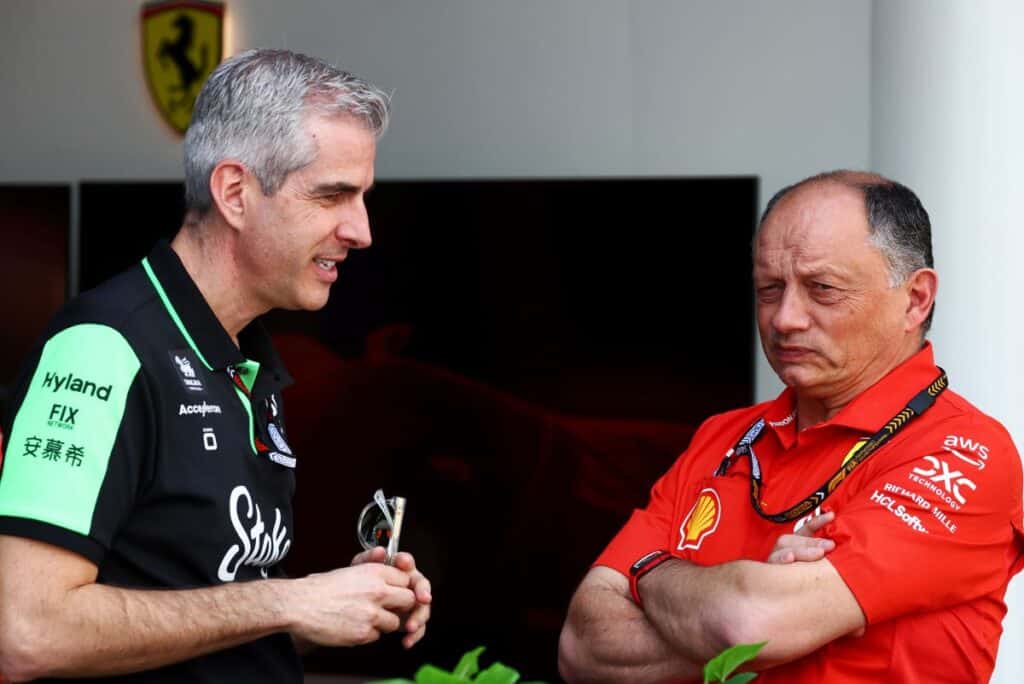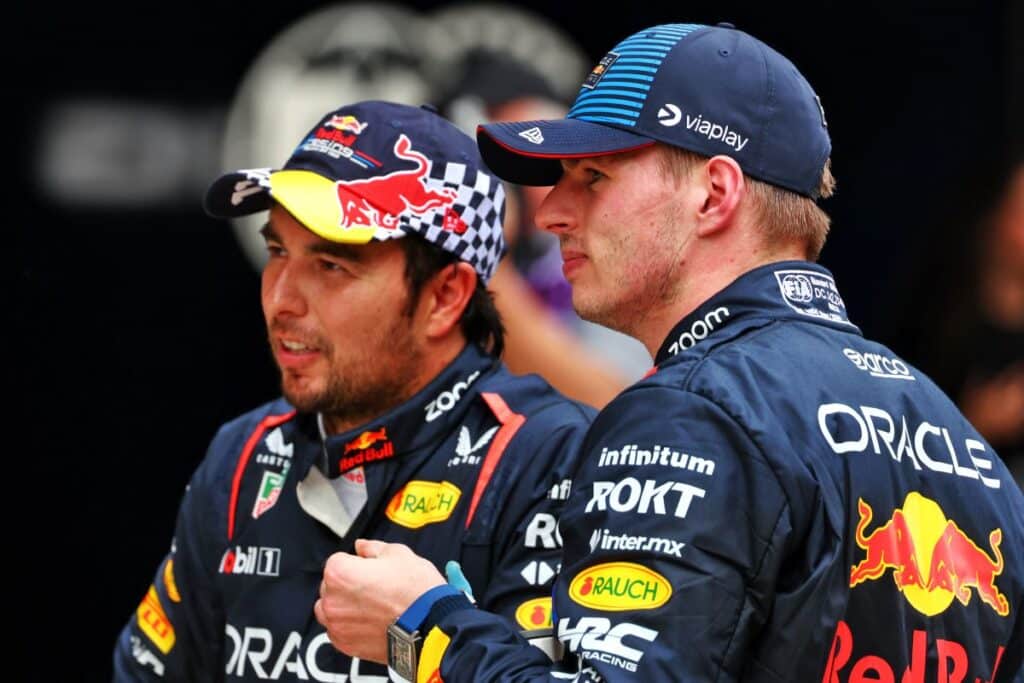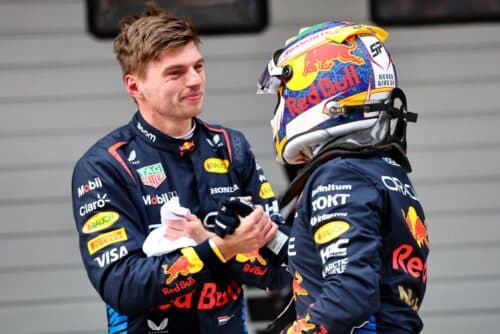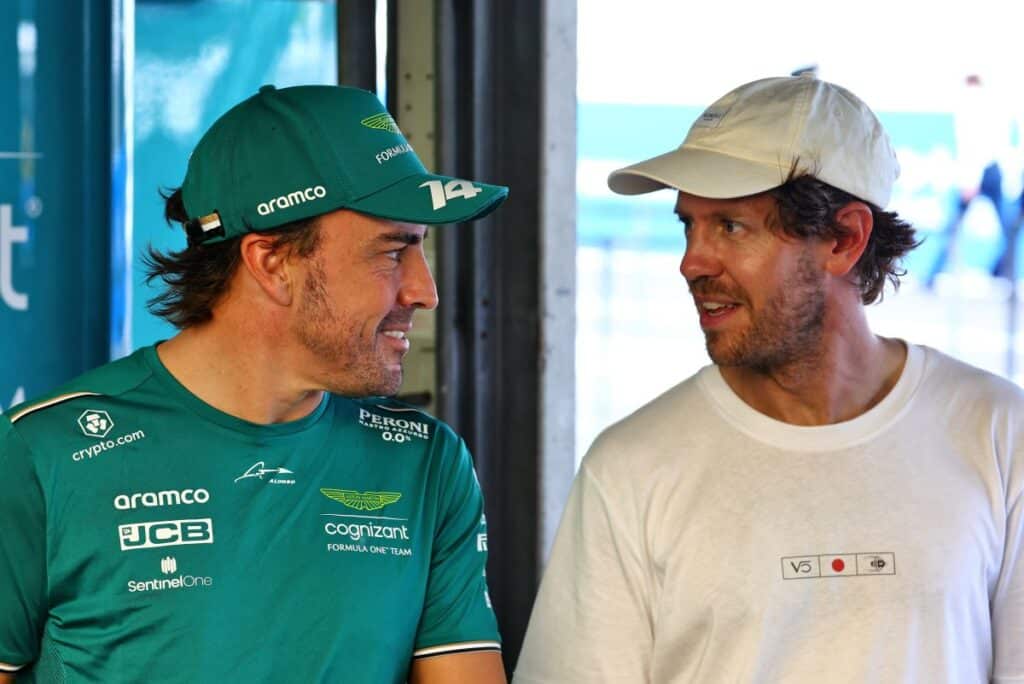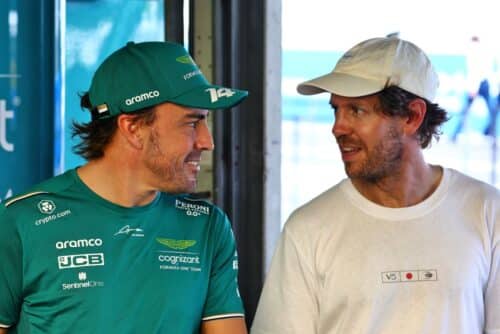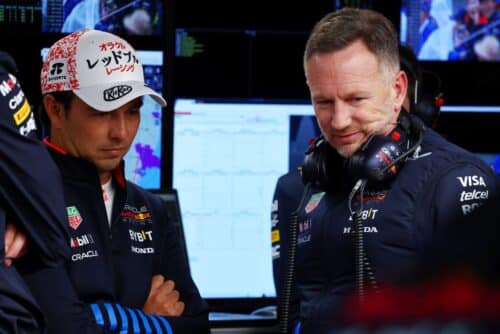2013 British Grand Prix, Silverstone: Preview and weekend times
Eighth round of the 2013 world championship
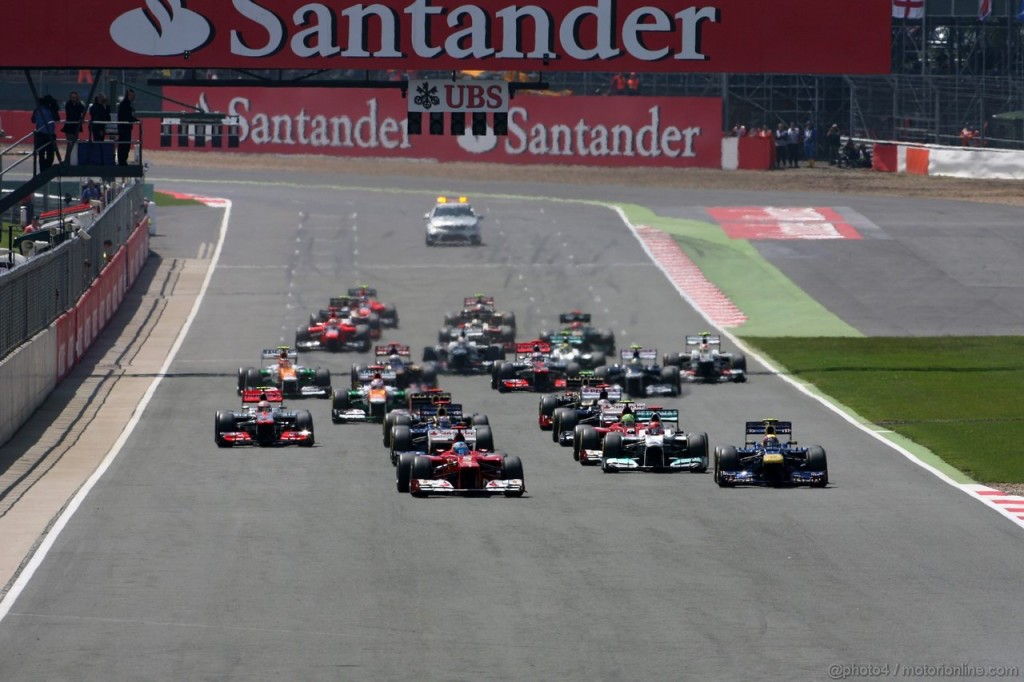
After another heartbreaking break of 3 weeks - we must banish these prolonged breaks, however, because we cannot stay without F1 for so long - the cars are finally preparing to return to the track at Silverstone, where it all began so many years ago does. But before delving into the description of the former military airport, let's pick up the thread of the situation by analyzing Canada's race.
Al top we certainly find Sebastian Vettel who, for the nostalgic, took us back to 2011. Race dominated from start to finish, in PlayStation mode, almost to the point of actually going straight into the wall, as if you could press start-restart. Masterful performance also for Fernando Alonso, who placed second after a furious and spectacular comeback from sixth place. Best race of the year for Vergne, who, despite being lapped, finished in sixth place with the Tororosso, right in front of the man who felt the best performance of the weekend, recovering 10 positions compared to the start: let's talk about Paul Di Resta, who after being eliminated in Q1 on Saturday returns to the points on Sunday. Chapeau. Great comeback also for Felipe Massa, who this time did not want to risk contact and preferred a consistent race rather than a demoralizing retirement.
From the series "anonymous competitions” we find the third and sad Lewis Hamilton, who wasn't smiling at all on the podium. Rightly after starting second and finishing third, we certainly couldn't expect a happy Lewis. With Mercedes he does what he can: he can't keep up with Vettel and lets Alonso pass him, not without a fight. Webber was also the protagonist of a fairly colorless race: it was also true that he was damaged by van der Garde, but he was taking seconds from his teammate at the start of the race. Never really as fast as you would expect. Rosberg then, thanks to the ease of overtaking on this track, which is certainly not Monte Carlo, slips to fifth position, first of those not lapped.
Flop sensational in Canada for Lotus: it barely gets the two drivers into the points. Let's not talk about Grosjean eliminated in Q1 on Saturday: he finished his race thirteenth, at least without accidents. But Raikkonen for the first time this season was no longer the Iceman we know. He gets a grid penalty, never gets into gear in the race and finishes in a very sad ninth place. And we come to the painful McLaren notes. Absolute delirium in Canada. Eleventh and thirteenth. Next is the British GP, do you think people will support McLaren or Lewis Hamilton?
13 May 1950, Silvertone circuit: Formula 1 is born. Defining the Silverstone track as "historic" is an understatement: this track is something wonderful, during the Formula 1 weekend there is a festive atmosphere among the fans. Something similar can only be found in Monza. Because the passion for car racing is in the blood of the English as it is in that of the Italians. The tracedIt is true that it has changed a lot since its inception. Initially it was obtained from the union of the classic three take-off runways, placed to form a triangle, of the military airports of the Second World War. It was a very fast ring, and to delimit the curves simple bales of hay were placed on the asphalt. Over the years there have been numerous changes which, however, have never been able to obscure the fast and technical nature of the circuit, despite the last and very questionable modification which brought the starting straight and the pit lane after the Club curve and the whole complex of curves that follow, initially built for the MotoGP, then also used by Formula 1. From a triangular track, as it was born, in 1950 for the first edition of a Formula 1 GP the perimeter roads of the airport were used, thus building a ring which will remain unchanged until 1975: on that date a chicane is inserted to limit speed at the Woodcote curve. In 1987 the Bridge curve was slightly modified, but the most significant changes occurred in 1991 and revolutionized the layout: the Becketts curve was modified, making it a complex of three very fast curves, Maggotts – Becketts – Chapel; the Stowe curve and the Club curve are modified, making them both slower; a complex of curves is inserted between Bridge and Woodcote. In 1994 the Abbey curve was modified again, making it even slower. Subsequently in 2010 as mentioned before, the new configuration involves the revolution of the pit lane and a new series of corners after Abbey, which includes the Village curve and the Wellington straight. The first zone will be located precisely on this straight DRS, while the second section will be on the straight that leads from Chapel curve to Stowe curve, the so-called Hangard Straight. Both are quite long stretches of track, so no doubt it will be very easy to overtake using the movable wing. For this stage the Pirelli has decided to bring the White Medium and Orange Hard tyres, but as they say "lots of smoke and no fire": in the end there will be no new tires as the teams have not reached unanimity (also due to the few tests conducted in Canada with the new tyres). The Milanese manufacturer has announced that it will bring tires with innovations in terms of the production process, to be able to deal with the problem of delamination. Next Sunday's race will be broadcast live only by Sky (therefore, no subscribers, watch the streaming!) and will be re-broadcast in its entirety by Rai in the evening: qualifying will be at 18pm on Rai 00 while the race will be as usual usual at 2pm on Rai 21.
Top 10 British GP editions
1977 edition: raced at Silverstone, saw Renault's debut in the world championship with the RS01 with a turbocharged engine; during testing David Purley went from 170 km/h to 0 in the space of 70 centimeters: multiple fractures and a long period of hospitalization after a deceleration of 180 G. in the race the home driver James Hunt on McLaren – Ford won, after a bad start from pole, he recovered from his rivals by beating Niki Lauda (Ferrari), whose car suffered from braking system problems, and Gunnar Nilsson (Lotus Ford). Various retirements including those of Mario Andretti, Jody Scheckter and John Watson.
1983 edition: the last edition raced on Saturday includes 67 laps to complete for a total of 316 km. Many new features were presented including the Honda engines mounted on "laboratory" single-seaters (the Spirit), the first Ferrari with a carbon fiber monocoque (the 126 C3) and the debut of the new Lotus 94T which replaces the unfortunate 93T. in the race Alain Prost on Renault wins in 1h24'37'' ahead of Nelson Piquet on Brabham – BMW and the Frenchman Patrick Tambay on Ferrari. Home driver Nigel Mansell came fourth, confirming the good qualities of the new Renault-powered Lotus single-seater.
1987 edition: front row all Williams with Piquet and Mansell dominating thanks to the Japanese engines, third Senna on Lotus and fourth Alain Prost on McLaren. In the race, however, the Englishman prevailed over the Brazilian by just under 2 seconds after an epic comeback made of fast laps and due to a long stop in the pits due to some tire problems, overtaking "Silverstone Two Step" which took place at 59th lap. Senna was third after more than one lap, powerless in the face of the excessive power of Williams, and his teammate Nakajima was fourth, who obtained the position thanks to the failure of the TAG engine of Prost's single-seater.
1994 edition: eighth event of the season, held on 10 July on a total of 60 laps. Damon Hill (Williams – Renault) outwitted Schumacher and Berger in the final qualifying by taking pole. The German doesn't seem to take it very well and the following day during the reconnaissance lap he overtakes the Englishman several times, receiving a stop & go from the judges, but he doesn't respect it and is disqualified. Regardless of this, he completes the entire race, always finishing second behind the Englishman but will still be removed from the ranking, thus leaving the second step to Jean Alesi (Ferrari) and the third to Mika Häkkinen (McLaren – Peugeot) who gets the better of Rubens Barrichello after a very intense challenge.
1998 edition: edition remembered for the heavy rain which saw only nine cars reach the finish line and for Schumacher's singular way of winning. In qualifying the fastest is Häkkinen (McLaren – Mercedes) who precedes Schumacher (Ferrari) by half a second. The following day heavy rain which intensifies as time passes forces many riders to retire, even the most experienced ones like Alesi and Hill. The winner is Schumacher who crosses the finish line in the pit lane serving the stop&go that had previously been assigned to him by the race stewards, second to the Finn and third Eddie Irvine who concludes his excellent comeback; after the race the McLaren appeal was useless as, according to the FIA, the communication to the Ferrari garage had arrived too late for the driver to do otherwise.
2003 edition: in qualifying the fastest is Rubens Barrichello on Ferrari, second is Jarno Trulli on Renault. At the start, the following day, the Brazilian got off to a bad start and was overtaken by the Italian and Kimi Räikkönen. But the advantages are canceled out when a man in a kilt enters the track risking his own life and that of the drivers themselves, only to be tackled by a courageous commissioner and taken away. In the end Barrichello will win after a long duel with the Finn, who will also have to give up the position to Montoya (Williams – BMW).
2005 edition: a Colombian wins for the first and still only time on the English track. In fact, Juan Pablo Montoya (McLaren – Mercedes), starting from the second row, got off well at the start and took the lead, maintaining the lead for the entire race and also scoring his first victory with the Woking manufacturer. Fernando Alonso on Renault comes second and Räikkönen, the Colombian's teammate, comes third; Ferrari are in serious crisis, sixth and seventh respectively.
2008 edition: pole position for the Finnish Heikki Kovalainen (McLaren – Mercedes), fastest lap for Kimi Räikkönen (Ferrari) but victory for the Englishman Lewis Hamilton who got the best setting on a wet track and went on to win ahead of Nick Heidfeld (Bmw – Sauber) and Barrichello (Honda). Ferrari gets the pit stop strategy wrong, leaving tires that are too worn on the cars and relegating the drivers to fourth and thirteenth position respectively at the end of the race.
2011 edition: only victory this season for the Spaniard Alonso (Ferrari) who got the better of the two RBR – Renaults of Vettel (2nd) and Webber (3rd), thus bringing the little horse manufacturer onto the top step after 9 months top of the podium. After the race, the FIA fined McLaren 25.000 euros for sending Button onto the track without screwing on the right front wheel, forcing him to retire; Sauber also fined €20.000.
2012 edition: Fernando Alonso (Ferrari) took pole, flanked on the front row by Mark Webber (RBR – Renault), Michael Schumacher on Mercedes took third place. In the race, however, the Spaniard had to give up first place to the Australian with just 4 laps to go (52 laps scheduled), Sebastian Vettel came third; Schumacher, on the other hand, finished seventh, affected by the severe degradation of the tyres, while Kobayashi returning to the pits hit some mechanics who however remained unharmed. From a world championship perspective, the Ferrari driver maintains a 13-point lead over Webber and 29 over Vettel.
PS: in the last few hours the verdict on the TestGate case has arrived: no penalties for Mercedes, they will only be excluded from the test session for young drivers. The impression is that the punishment was taken a little too lightly. An appeal: let's put the tests back into the season please, everyone will be happier, teams, drivers and fans...
Friday 28 June
Free 1: 11:00-12:30 (Sky Sport F1 HD)
Free 2: 15:00-16:30 (Sky Sport F1 HD)
Saturday June 29
Free 3: 11:00-12:00 (Sky Sport F1 HD)
Qualifying: 14:00-15:00 (Sky Sport F1 HD)
Sunday 5 June
Race: 14pm ̶ 00 laps ̶ 52km (Sky Sport F306,198 HD)
* all times indicated refer to Italy: there is a 1 hour difference between Italy and Great Britain.
Distance per lap: 5,891km
Number of curves: 18
Direction of travel: hours
RECORD
Test lap: 1:29.615 – S Vettel – Red Bull Renault – 2010
Race lap: 1:30.874 – F Alonso – Ferrari – 2010
Distance: 1h24:38.200 – M Webber – Red Bull Renault – 2010
Driver victories: 5 – J Clark, A Prost
Team victories: 16 – Ferrari
Driver Pole: 5 – J Clark
Pole team: 15 – Ferrari
Best driver laps: 7 – N Mansell
Best team laps: 19 – Ferrari
Driver podiums: 7 – A Prost, M Schumacher
Team podiums: 50 – Ferrari
Hall of Fame
01. 1926 Senechal and Wagner – Delage
02. 1927 R Benoist – Delage
03. 1948 L Villoresi – Maserati
04. 1949 E de Graffenried – Maserati
05. 1950 N Farina – Alfa Romeo
06. 1951 J Gonzalez – Ferrari
07. 1952 In Ascari – Ferrari
08. 1953 In Ascari – Ferrari
09. 1954 J Gonzalez – Ferrari
10. 1955 S Moss – Mercedes
11. 1956 J Fangio – Ferrari
12. 1957 S Moss – Vanwall
13. 1958 P Collins – Ferrari
14. 1959 J Brabham – Cooper Climax
15. 1960 J Brabham – Cooper Climax
16. 1961 W von Trips – Ferrari
17. 1962 J Clark – Lotus Climax
18. 1963 J Clark – Lotus Climax
19. 1964 J Clark – Lotus Climax
20. 1965 J Clark – Lotus Climax
21. 1966 J Brabham – Brabham Repco
22. 1967 J Clark – Lotus Ford
23. 1968 J Siffert – Lotus Ford
24. 1969 J Stewart – Matra Ford
25. 1970 J Rindt – Lotus Ford
26. 1971 J Stewart – Tyrrell Ford
27. 1972 E Fittipaldi – Lotus Ford
28. 1973 P Revson – McLaren Ford
29. 1974 J Scheckter – Tyrrell Ford
30. 1975 E Fittipaldi – McLaren Ford
31. 1976 N Lauda – Ferrari
32. 1977 J Hunt – McLaren Ford
33. 1978 C Reutemann – Ferrari
34. 1979 C Regazzoni – Williams Ford
35. 1980 A Jones – Williams Ford
36. 1981 J Watson – McLaren Ford
37. 1982 N Lauda – McLaren Ford
38. 1983 A Prost – Renault
39. 1984 N Lauda – McLaren TAG
40. 1985 A Prost – McLaren TAG
41. 1986 N Mansell – Williams Honda
42. 1987 N Mansell – Williams Honda
43. 1988 At Senna – McLaren Honda
44. 1989 At Prost – McLaren Honda
45. 1990 A Prost – Ferrari
46. 1991 N Mansell – Williams Renault
47. 1992 N Mansell – Williams Renault
48. 1993 A Prost – Williams Renault
49. 1994 D Hill – Williams Renault
50. 1995 J Herbert – Benetton Renault
51. 1996 J Villeneuve – Williams Renault
52. 1997 J Villeneuve – Williams Renault
53. 1998 M Schumacher – Ferrari
54. 1999 D Coulthard – McLaren Mercedes
55. 2000 D Coulthard – McLaren Mercedes
56. 2001 M Hakkinen – McLaren Mercedes
57. 2002 M Schumacher – Ferrari
58. 2003 R Barrichello – Ferrari
59. 2004 M Schumacher – Ferrari
60. 2005 J Montoya – McLaren Mercedes
61. 2006 F Alonso – Renault
62. 2007 K Raikkonen – Ferrari
63. 2008 L Hamilton – McLaren Mercedes
64. 2009 S Vettel – Red Bull Renault
65. 2010 M Webber – Red Bull Renault
66. 2011 F Alonso – Ferrari 67. 2012 M Webber – Red Bull Renault
Andrea Villa, Matteo Bramati.
if you want to always be updated on our news
Follow us here




